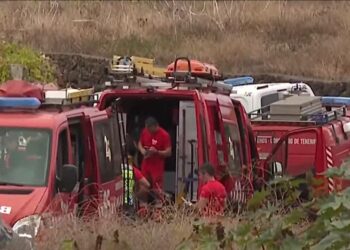Santa Cruz de Tenerife has received approval to proceed with one of the final wastewater management projects in the municipality, aiming for zero discharge. The Port Authority’s Board of Directors granted permission on the 23rd for Emmasa to undertake work in the zone between San Andrés and María Jiménez, with a validity period extending to 31st March 2031. The agreement, published in the Official State Gazette (BOE), enables the Santacrucera mixed water company to manage this project, which will involve enlarging the existing land area owned by the Port Authority from 1,811 to 2,837 square metres post-intervention.
The mayor, José Manuel Bermúdez, emphasised in an interview with DIARIO DE AVISOS that “with this approval, we are now almost at the stage where all necessary projects are in motion to achieve zero discharge along the Santa Cruz coastline, signifying a strong commitment to a more sustainable city.”
The councillor remarked that “the channeling from San Andrés to María Jiménez will complement the ongoing projects in the Southwest district, Anaga, and throughout the municipality. Achieving zero discharge is a crucial goal for this term, a culmination of many years of effort.” Carlos Tarife, the Public Services Councillor, added that “we have now secured the final authorisation required to commence the last project towards fulfilling zero discharge in the municipality, meaning that following the channeling from San Andrés to María Jiménez, Santa Cruz will eliminate all discharges into the sea next year.”
The mayor indicated that “by 2026, the capital will regain the blue flag it lost 23 years ago, provided that throughout 2025 we can finalise all discharges to the coast, including those from Tachero-Taganana, alongside accomplishments in Igueste. Hence, the permission granted to Emmasa for the San Andrés-María Jiménez pipeline, along with progress on the Anatolio Fuentes pipeline (Honduras dock) linked with the Añaza and Acorán pipeline, and the Buenos Aires treatment plant completed by the State, will allow us to celebrate a significant resolution to a historic issue in the capital.”
Tarife predicted, “by 2026, there will finally be no more red marks in the city of Santa Cruz, so the Environment Department understands that starting next year, we should begin revisiting the blue flag applications.”
Although along the promenade, the once vibrant hearts have been marked out against the now dull grey and white walls, the feeling is one of fading to black, an end to joy, akin to ‘donkey belly’ (the term used in the Islands for the intense accumulation of grey or black clouds due to condensation, particularly in areas like La Orotava Valley). Nonetheless, peace has returned to Bocacangrejo, and visitors continue to flock to witness what once was, what remains, and what may potentially emerge elsewhere in this stunning Archipelago, which, in an almost universal trend, increasingly bears the brunt of mass tourism, the complex impacts of social media, and the understandable reactions of some locals who, recognising the critical importance of tourism (35% of the Canarian GDP and 40% of employment), often protest that “this is not the way,” as evidenced by the highly attended demonstrations on April 20, drawing approximately 200,000 participants across all the Islands, particularly in Santa Cruz de Tenerife.
Rafa prefers not to engage with anyone. He isolates himself in his home, leaving the townsfolk aware that he is struggling. Someone has shattered his heart and joy, yet the lessons from this sorrowful tale should provoke thought on the desired nature of tourism, the coexistence with locals, and the spontaneous and community-driven artistry from sensitive individuals with diverse and joyful perspectives on life.
Crabmouth has seen the loss of many of their hearts, although that is merely one interpretation if you truly live from the heart.
















